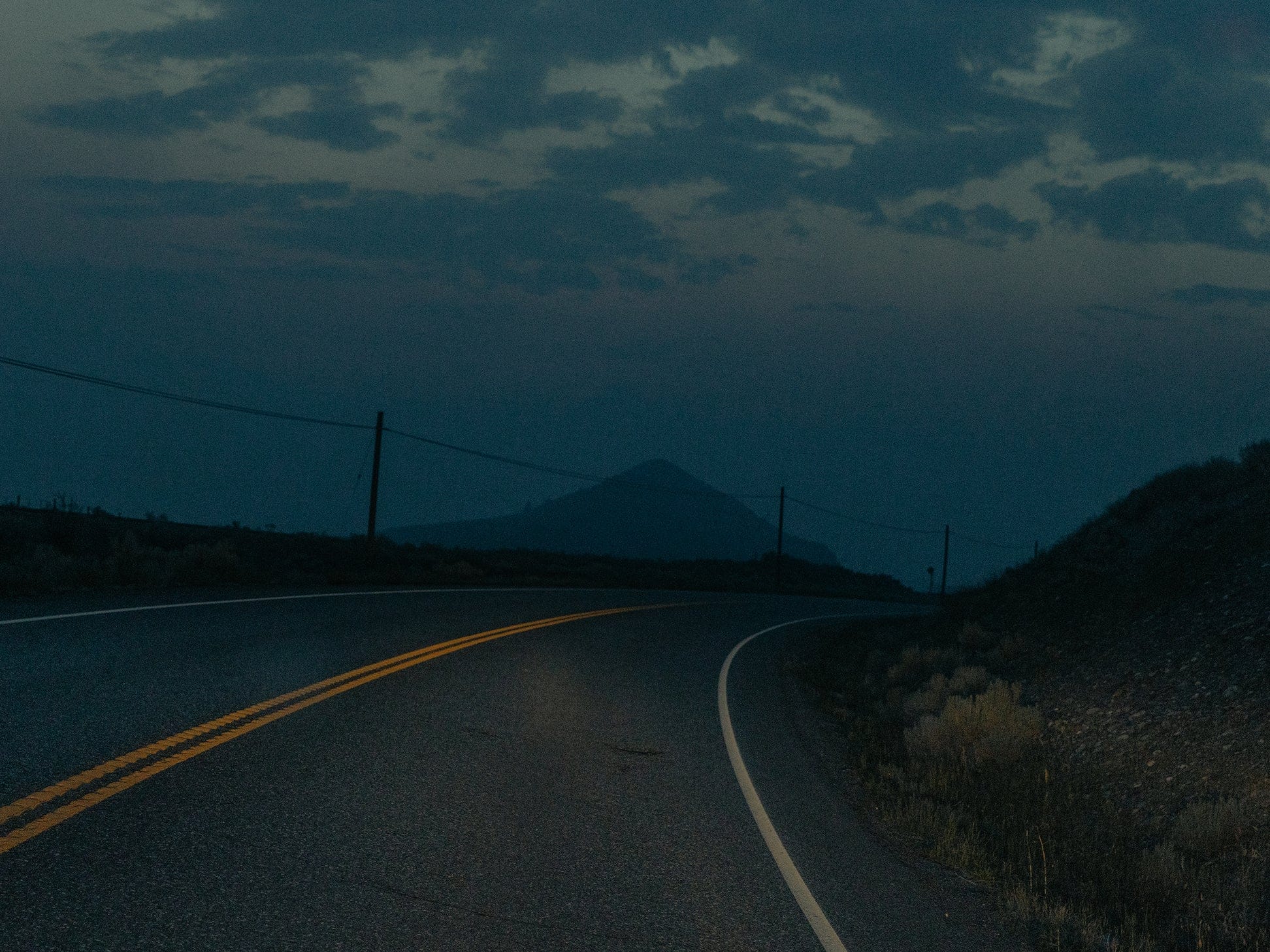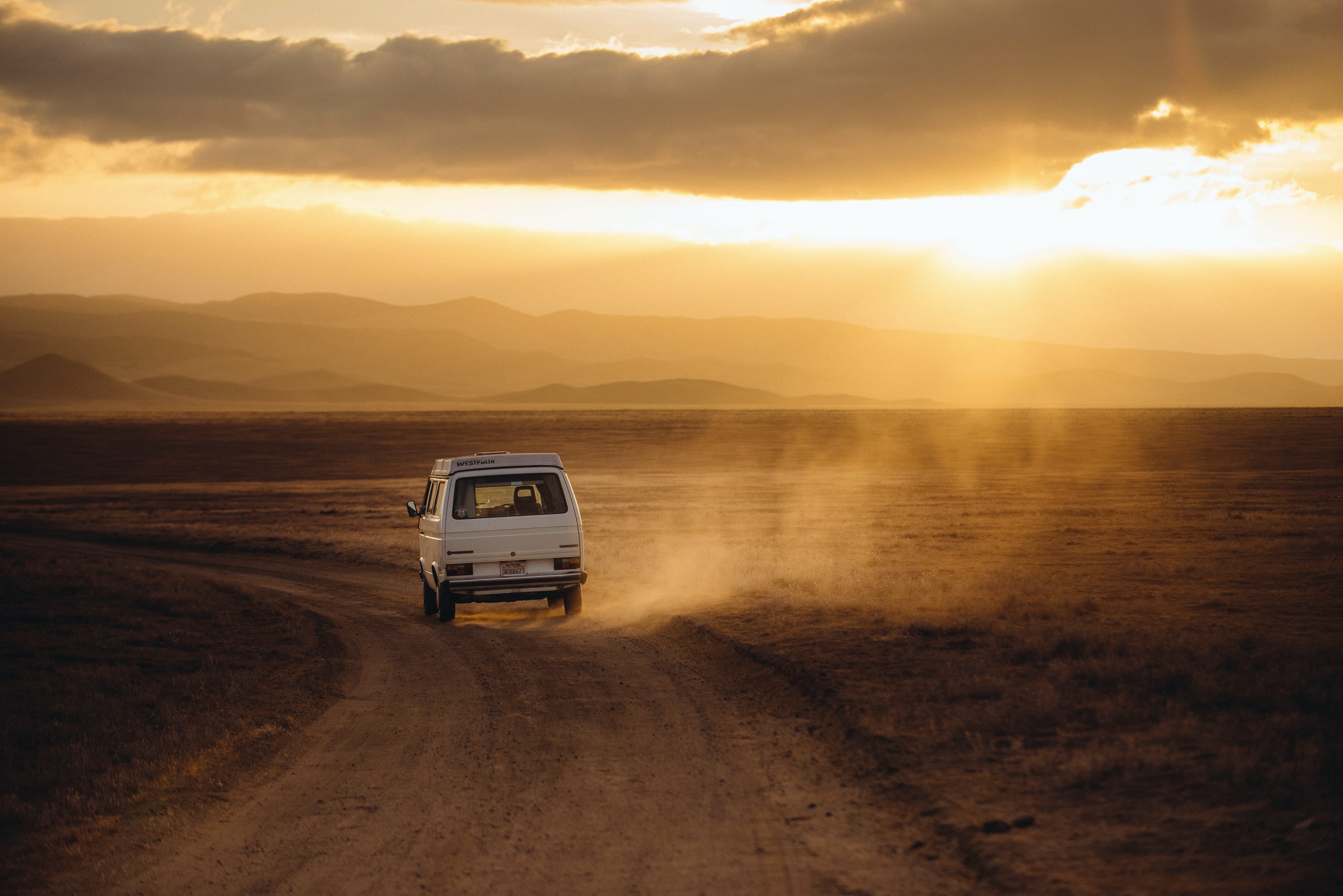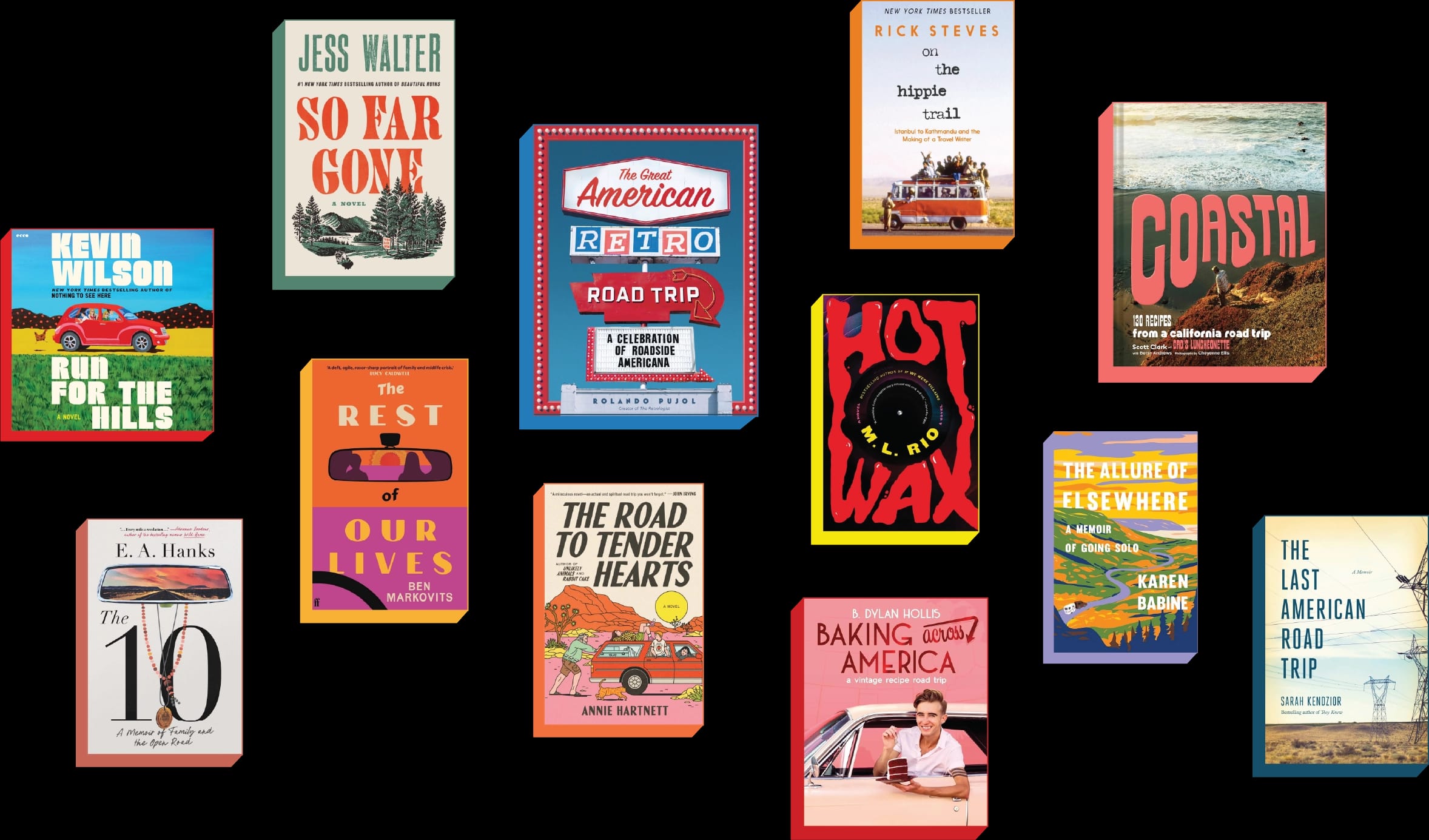NEVADA’S MONUMENTAL DESERT ART MASTERPIECE
"City" is vast, remote and surreal—exactly what its creator intended
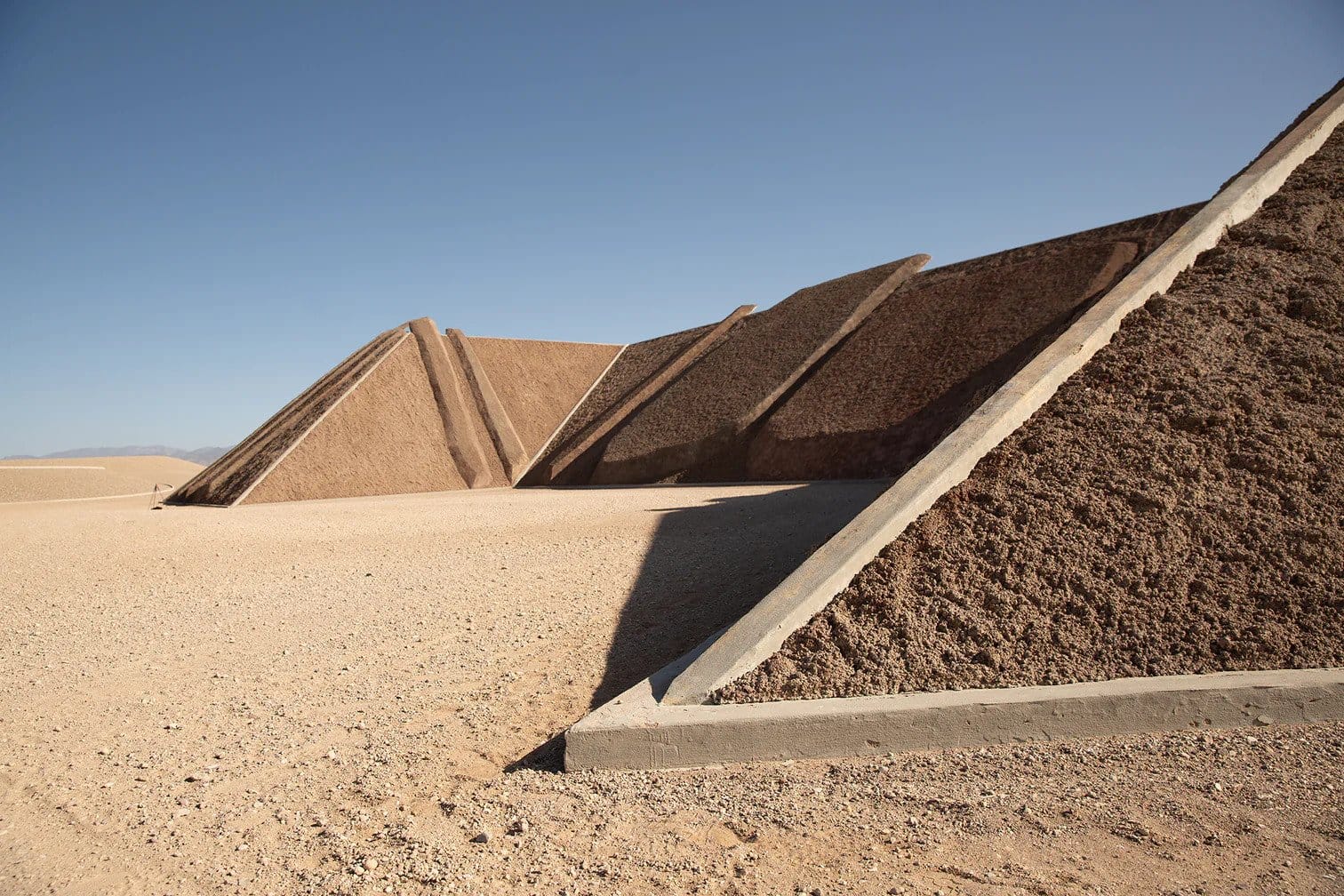
Complex Two, City. © Michael Heizer. Photo: Joe Rome via Triple Aught Foundation.
CITY IS VAST, REMOTE AND SURREAL—EXACTLY WHAT ITS CREATOR INTENDED
What is Las Vegas? As a city, it’s everything and nothing. I’ve been to Las Vegas half a dozen times and all I’ve been able to figure out is that Vegas is predictably unpredictable – a museum of a city, in a way, in which all other American cities get transformed into over-the-top performance art.
On the other hand, three hours north of Las Vegas is City, a massive piece of art dug into the eastern Nevada desert. City is one and a half miles long and half a mile wide. It took more than 50 years to build, and only recently opened to the public after decades as a near-mythical art-world legend. Like Vegas, it is immense and overpowering—but through silence, through subtraction. City is Las Vegas inverted, abstracted.
It’s the largest contemporary artwork ever made.
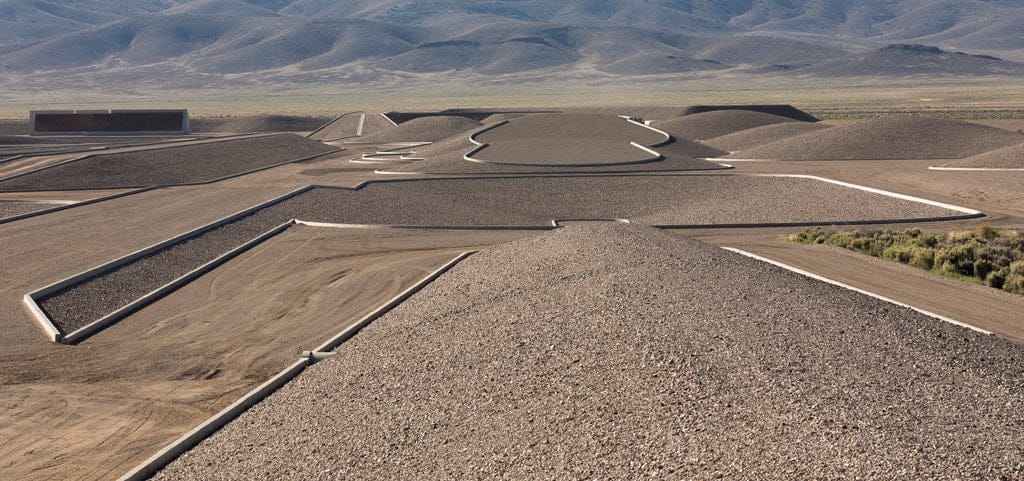
I was invited to visit City recently—an extremely privileged summons. Only six visitors can experience the site per day, and only on select days each week. Reservations, booked through the non-profit Triple Aught Foundation which operates City, need to be made far in advance. Everyone in our party was connected to the art world. The group included a sculptor, a photographer, and a museum director.
One Friday morning, we traveled an hour and a half north from Las Vegas to Alamo, Nevada, to meet one of City’s drivers, a man named Mark. He introduced himself as a local cattle rancher and a sixth-generation Nevadan; a distant ancestor had traveled west, he said, with Brigham Young. We piled into his large SUV—with a spare tire strapped to the roof—and soon got deep in the desert wilderness.
City is the work of the artist Michael Heizer, an example of land art or “earthworks.” The genre refers to a type of abstract sculpture whose site and materials—often drawn from the site itself—are integral to the art. Famous pieces of land art include Robert Smithson’s Spiral Jetty in Salt Lake City and Nancy Holt’s Sun Tunnels in Utah and Dark Star Park in Virginia. In America, land art traditionally goes big, seemingly in response to the immensity of the United States, especially its Western landscape.
For Michael Heizer (78 years old this year, in his 20s when he started City) Nevada was familiar territory: his ancestors have lived in the state since the 19th century. At times, he worked alone, or with his then-wife, the artist Mary Shanahan, or with numerous hired hands and volunteers. A lot of the work was fundraising, getting money from galleries and foundations; City cost an estimated $40 million to build. Still, by 2016, Heizer wasn’t finished, and the project had practically destroyed his physical health.
He told the New York Times, “This is a masterpiece, or close to it, and I’m the only one who cares whether the thing is actually done.”
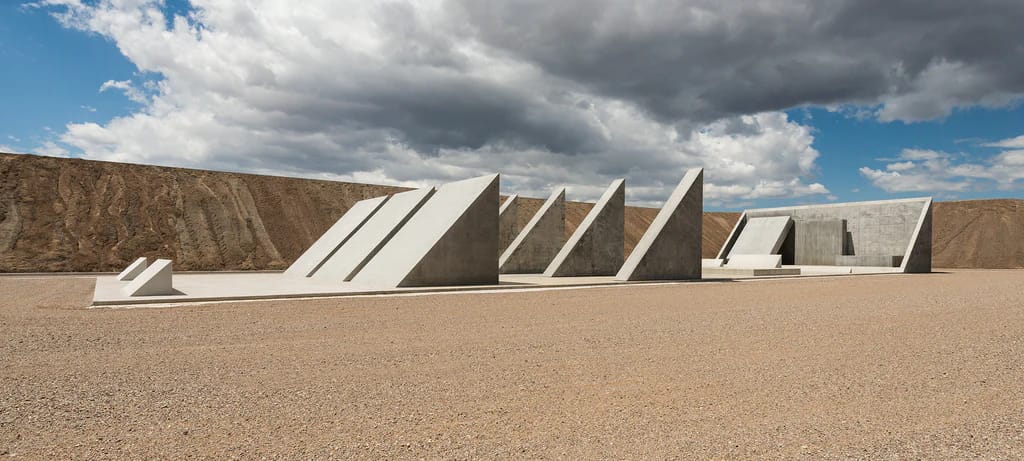
From Alamo, the drive ran mostly through the Basin and Range National Monument, some 700,000 acres set aside in 2015, in part to preserve City for future generations. The land was flat, dotted by high-desert scrub, 90 minutes of dirt roads under an immense blue sky, with huge rafts of cloud passing by at different heights. Our group talked about what we expected to experience. We admitted we had no idea. Occasionally Mark, the driver, got out of the truck to open cattle gates, and several times we passed some of his cows.
“For years, people around here, we were always wondering what the heck Heizer was doing,” Mark said. “Then I finally got to see it for myself for the first time.”
Most of City wasn’t visible as we approached. Mark parked in front of the entrance—a path winding through rounded berms of rock and dirt—and explained the rules: no photographs, no video, and we couldn’t climb on the earth mounds. If we saw any lightning, we needed to run back to the truck. Otherwise, for the next three hours, we had the sculpture to ourselves.
On first impression, once inside, City is simply huge and insane, almost obscene. Three hours later, that was also my final impression. The work consists of three sections: “Complex One;” “Complex Two;” and a sculpture installation named “45°, 90°, 180°.” But not exactly. There’s no map. There are no benches for sitting, no signage or any distinctions between sections. (There are two Porta Potties on the southern rim of the complex.)
Instead, the piece unfolded as I followed gravel roads that slithered around what Heizer wrought.
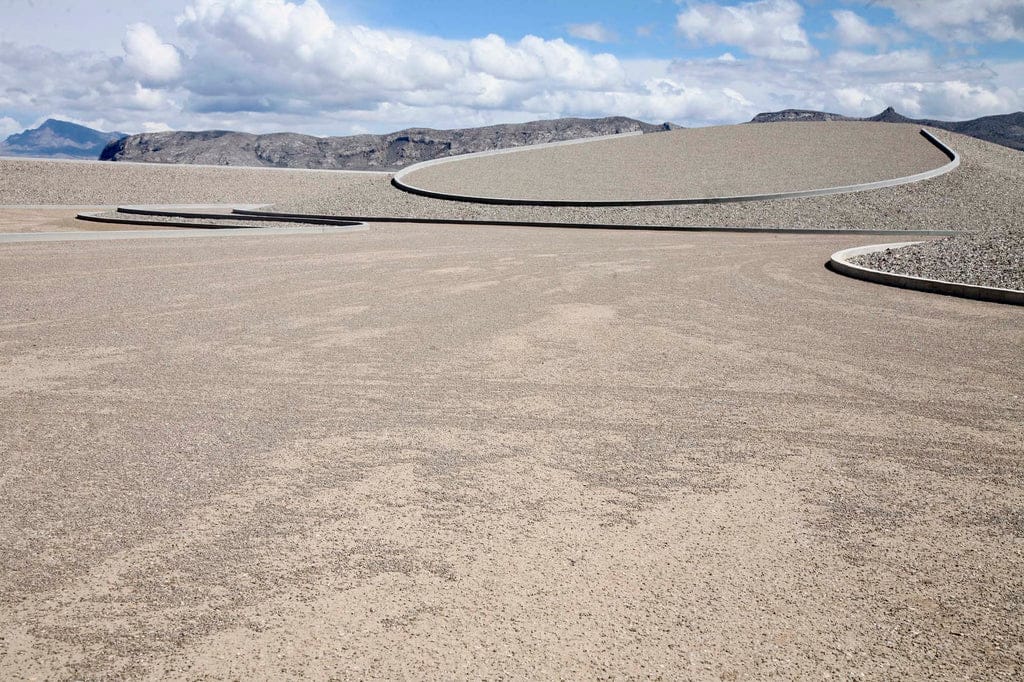
We decided to go west to start, toward snow-capped mountains. Gradually we descended into a large rounded pit. This suggested what Heizer once termed “sculpture in reverse”: an immense, semi-oblong bathtub excavated from the ground. In the distance were massive concrete triangles resembling temple artifacts, or aircraft wings on a plinth, or who the hell knows.
We walked in small groups or went solo. A race track (so it looked to me) circled the rim. What drew my eye were the differences in color all around us: the off-white granular trail lined by curving gray cement, next to yellower, impeccably graded mounds, all set against immense, reddish-brown ridges that looked like colossal crests of dirt until I touched one and realized it was sprayed concrete.
Heizer’s father was a field archeologist. His mother was the daughter of a geologist. Was the work meant to suggest more than the wilderness surrounding us, or some idea of urbanity, or both? Was this the trippiest garden I’d ever explored? How was everything as smooth as the sky? Perhaps most astonishing was the absence of footprints. All day long, we wouldn’t see any prints that weren’t ours, as though City was also, among everything else, the world’s largest Japanese rock garden. I asked Mark about this later. He said the site’s staff constantly re-combed it, tailored it, cleaning the roads the way a clay tennis court gets regroomed, or how a Zamboni smooths an ice rink. The staff, he said, even plucked or sprayed any weeds that popped up.
We kept heading west. The silence was bottomless. We reached “45°, 90°, 180°,” the hulking concrete triangles, and it became hard for my mind to stop devising comparisons. It was Teotihuacan. It was the ancient city of Petra. It was Mount Rushmore reconfigured for Denis Villeneuve’s Dune. Gradually, leaving “45°, 90°, 180°” and walking east, toward Complex One and Two, “City” became less of an intellectual puzzle and more about feeling. At times: off-putting and cold. At times: inviting, even carnal. In one portion, the roads began to plait around big knolls of rock in a way that felt sensual, and I started waving my arm to mimic the piles’ curves, as if I’d stuck my hand out a car window to surf the wind.
Around hour two, I joined the sculptor for a portion and asked for his impressions. “It’s so much about ego,” he said. “It’s so much about hubris.” What did the art world think, at least the folks he’d spoken to? “People aren’t really talking about it. Basically no one’s seen it. Art historians talk about it more—as a historical artifact.” He added, “There’s also a critique that it’s ‘guys doing big-dick stuff in the desert.’ Which is true.”
Half an hour later, I walked with the photographer. He said he found “City” quite emotional, the opposite of off-putting. “I’m enjoying thinking about it as a hike; it’s one of the best hikes I’ve ever done. I feel totally in my body. I feel like it was made for me.” He compared the concrete railings on the ground that lined each pathway to an artist’s pen marks. He pointed out there was always an incredible view. He added he felt so included by the sculpture, he wanted to stay for a month. “There’s a lot of space for a person to be here in different ways.”
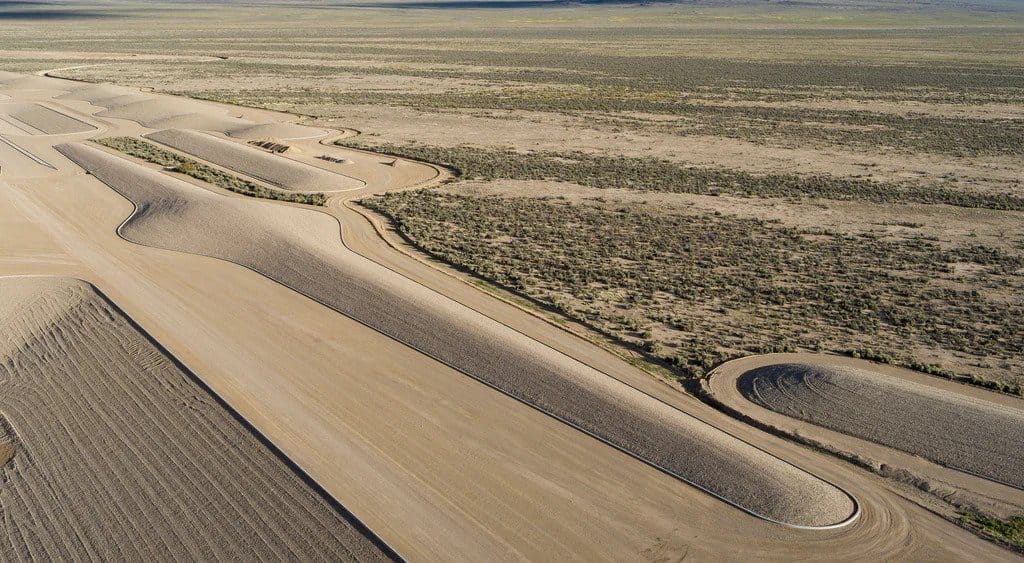
Nearing the end of the three hours, I climbed out of one of the basins and laid down on the ground. I picked up pieces of gravel and squeezed them, if only to recalibrate my sense of scale. Clouds drifted past—wispy clouds like dancers’ tutus, towering clouds like Marie Antoinette’s wigs. I fell asleep thinking about Las Vegas: how those gold-plated skyscrapers looked like someone had dug them up whole from a giant mine.
Twenty minutes later, I wandered back to the car. Mark smiled when he saw me. I probably looked completely wrung out. He said he’d seen people emerge in tears, they were so moved. “It’s truly an amazing thing,” he said. “I’ve gone through twice. I still feel like there’s a lot of it I haven’t seen.”
Heizer once said “As long as you’re going to make a sculpture, why not make one that compares with a 747, or the Empire State Building, or the Golden Gate Bridge?” On the drive back to Las Vegas, the sculptor said he’d changed his mind: no matter Heizer’s intentions or personality, City wasn’t so much a demonstration of male ego as something softer, less hubristic, more wondrous. Everyone in the truck agreed. Three hours later, we reached Vegas in the dark, though of course it wasn’t dark: all neon and bright lights and king-size digital billboards.
The next morning, I got into the hotel elevator to grab breakfast. Inside was a porter with a luggage cart. The cart carried two suitcases and a cage for a dog, though no dog. Instead there was a large, rumpled pair of Gucci men’s underwear and a pile of crumpled single dollar bills. I asked the porter if he’d had any questions. He said it was against policy to ask guests anything, though he had been curious. “What happens in Vegas … ” he said, and left it at that.
What is City? I find Las Vegas to be a city of such extreme scale, it often feels drab as a result. City, similarly scaled, felt audacious. And unlike Vegas, it told me nothing. It didn’t make claims. It didn’t really have bounds. It definitely didn’t make sense. It simply existed, way out in the desert, miles away from anything, waiting to be seen.

Rosecrans Baldwin
Rosecrans Baldwin is the bestselling author of Everything Now, winner of the California Book Award. Other books include The Last Kid Left and Paris, I Love You but You’re Bringing Me Down. His debut novel, You Lost Me There, was a New York Times Book Review Editors’ Choice. Rosecrans is a frequent contributor to GQ and Travel + Leisure magazines. He's based in Los Angeles.
Rosecrans Baldwin is the bestselling author of Everything Now, winner of the California Book Award. Other books include The Last Kid Left and Paris, I Love You but You’re Bringing Me Down. His debut novel, You Lost Me There, was a New York Times Book Review Editors’ Choice. Rosecrans is a frequent contributor to GQ and Travel + Leisure magazines. He's based in Los Angeles.
